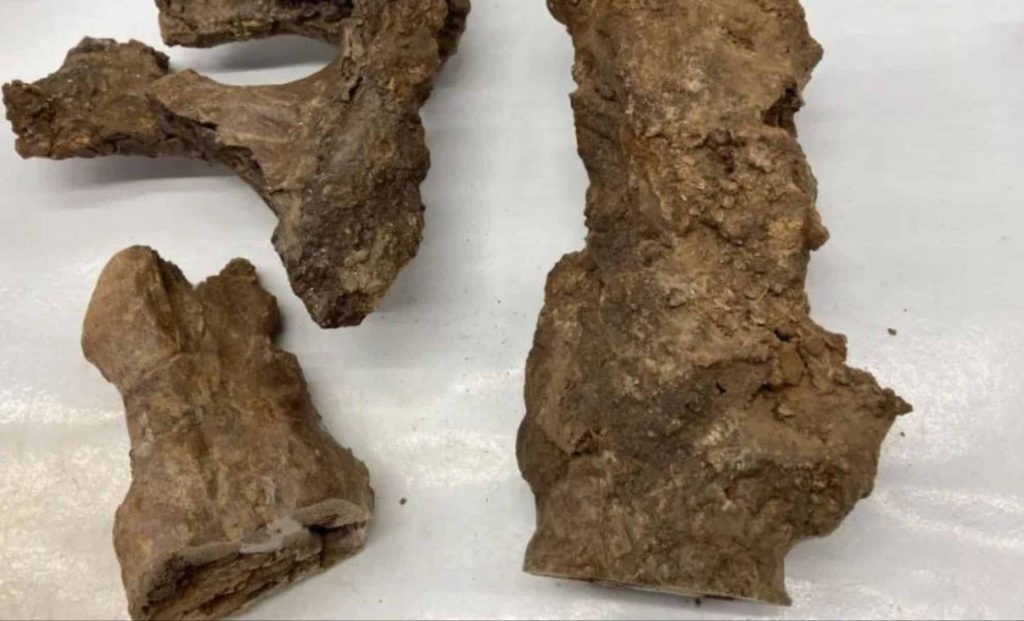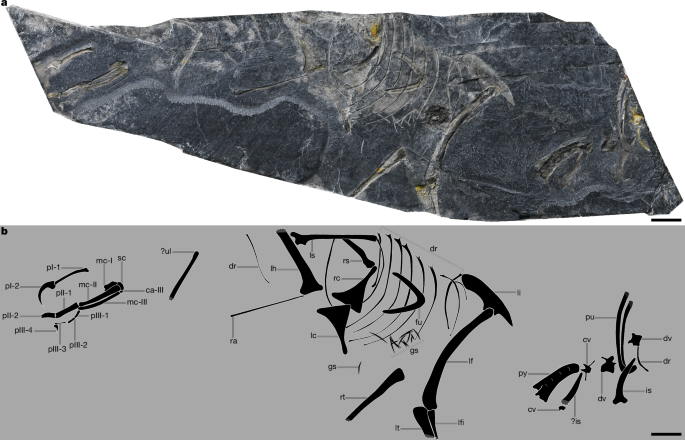Scientists Stunned After Finding Organic Molecules in a 66-Million-Year-Old Dinosaur Bone – Indian Defence Review

For more than a century, paleontologists believed that fossilization erased all traces of organic molecules from dinosaur bones, leaving behind nothing but mineralized remains. That long-standing assumption has now been shattered by a groundbreaking discovery from the University of Liverpool. Researchers have confirmed the presence of collagen, a key structural protein found in bone, inside the fossilized remains of a 66-million-year-old Edmontosaurus, a duck-billed dinosaur from the Late Cretaceous period.This discovery challenges one of the core principles of paleontology—that all biological material degrades within a few million years. Instead, the findings suggest that traces of prehistoric life may still be hidden within ancient fossils, waiting to be uncovered. If proteins can survive for tens of millions of years, what else might scientists find inside dinosaur bones?The study, published in Analytical Chemistry, focused on an exceptionally well-preserved Edmontosaurus hip bone, discovered in the Hell Creek Formation in South Dakota. This site is one of the most famous fossil deposits in the world, known for its remarkably intact dinosaur remains. However, no one expected to find biological molecules still lingering inside a fossil that has been buried for 66 million years.Using state-of-the-art mass spectrometry and protein sequencing, researchers identified collagen alpha-1, the main protein found in bone tissue. This is a groundbreaking revelation, as proteins like collagen were thought to break down completely within a few million years, making their survival in this fossil nothing short of astonishing.Professor Steve Taylor, chair of the Mass Spectrometry Research Group at the University of Liverpool’s Department of Electrical Engineering & Electronics, emphasized just how significant this discovery is:“This research shows beyond doubt that organic biomolecules, such as proteins like collagen, appear to be present in some fossils.”“Our results have far-reaching implications. Firstly, it refutes the hypothesis that any organics found in fossils must result from contamination.”“Secondly, it suggests that cross-polarized light microscopy images of fossil bones, collected for a century, should be revisited. These images may reveal intact patches of bone collagen, potentially offering a ready-made trove of fossil candidates for further protein analysis. This could unlock new insights into dinosaurs—for example, revealing connections between dinosaur species that remain unknown.”“Lastly, the findings inform the intriguing mystery of how these proteins have managed to persist in fossils for so long.”This suggests that other fossilized bones stored in museums and research collections worldwide may still contain hidden traces of organic material. If more fossils are reexamined using modern biochemical techniques, scientists could gain molecular-level insights into dinosaurs for the first time.One of the most puzzling aspects of this discovery is how collagen molecules remained intact for so long. For decades, researchers believed that proteins could not survive the extreme conditions of fossilization, including high pressure, heat, and mineralization. Yet, this study proves that some biological materials can persist far longer than previously thought.Scientists are now investigating how these proteins managed to endure for millions of years. Several theories have been proposed:Understanding these preservation mechanisms could change how paleontologists study fossils and lead to more discoveries of ancient organic material.To ensure their results were accurate and irrefutable, the University of Liverpool research team collaborated with experts from multiple fields to analyze the dinosaur bone using the most advanced techniques available.This level of cross-disciplinary verification makes it extremely difficult to dismiss the findings. The research not only refutes past claims that any organic material in fossils must be contamination, but also sets a new precedent for the study of fossilized remains.The discovery of collagen in a fossilized dinosaur bone raises a profound question: how many other fossils contain preserved organic material? If proteins can survive for millions of years, it is possible that other biological molecules—including lipids, sugars, or even fragments of genetic material—might still exist in well-preserved specimens.This could lead to groundbreaking advancements in several areas of paleontology:While the idea of extracting intact dinosaur DNA remains purely fictional, the presence of proteins like collagen could allow scientists to study dinosaurs in ways that were once thought impossible.This research marks the beginning of a new era in fossil science. If organic molecules can persist for tens of millions of years, the fossil record may contain far more secrets than scientists ever imagined.With advances in technology and interdisciplinary research, paleontologists now have a chance to unlock the biochemical mysteries of ancient life. If proteins can survive for 66 million years, what else could be waiting to be discovered inside the bones of dinosaurs?The answers could transform our understanding of prehistoric life forever.Got a reaction? Share your thoughts in the commentsEnjoyed this article? Subscribe to our free Newsletter for engaging stories, exclusive content, and the latest newsComment Save my name, email, and website in this browser for the next time I comment.
© 2024 | Indian Defence Review | All rights reserved
Source: https://indiandefencereview.com/organic-molecules-66-m-year-dinosaur-bone/






